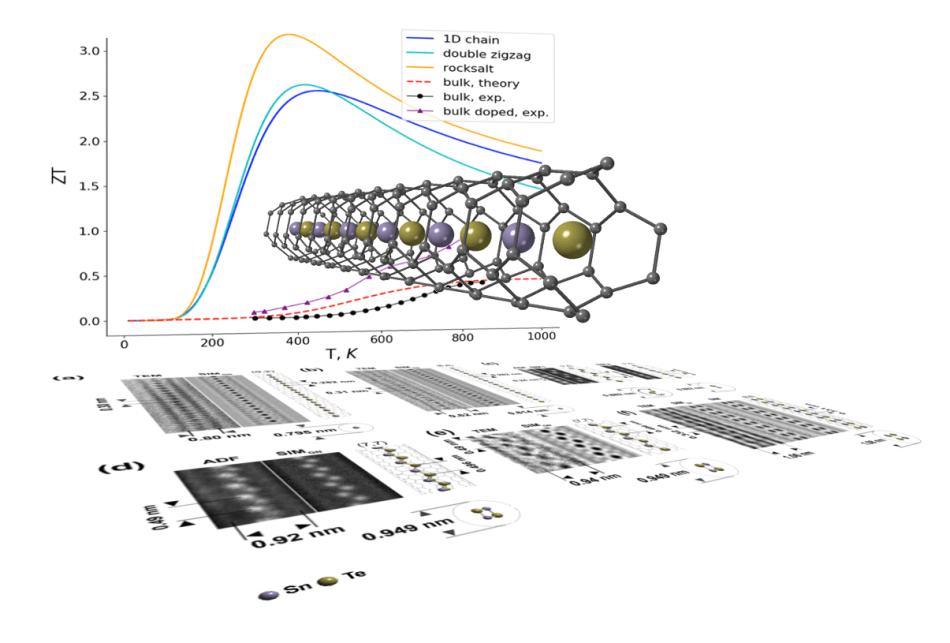Jun 4 2018
According to a new study from the University of Warwick, waste heat can be changed to electricity more efficiently using one-dimensional atomically thin nanowires.
 Diagram showing one-dimensional nanowires conducting waste heat to electricity. (Credit: University of Warwick)
Diagram showing one-dimensional nanowires conducting waste heat to electricity. (Credit: University of Warwick)
Nanowires as thin as atoms can conduct more electricity and less heat simultaneously, yielding unparalleled conversion efficiency when compared to the same bulk material.
The study presents new opportunities to shift from heat-to-electricity conversion to into renewable energy, ushering an innovative way of producing sustainable energy.
The researchers, headed by Drs Andrij Vasylenko, Jeremy Sloan, Samuel Marks, and David Quigley from Warwick’s Department of Physics, in association with the Universities of Cambridge and Birmingham, have discovered that shaping the thermoelectric materials into the thinnest possible nanowires can result in highly effective materials.
These materials are capable of harvesting waste heat and converting it into electricity and as a result, they are highly favored as environmentally friendly and renewable sources of energy.
In contrast to 3-dimensional material, isolated nanowires conduct less heat and more electricity at the same time. These unique properties yield unprecedented efficiency of heat-to-electricity conversion in one-dimensional materials.”
Dr Andrij Vasylenko, First Author
The scientists, which included the team of Dr Andrew J. Morris from the University of Birmingham, were studying the crystallization of tin telluride in very narrow carbon nanotubes which were employed as templates for the formation of these thermoelectric materials in their lowest dimensional form.
In a joint experimental-theoretical study, the researchers successfully established a direct reliance between a template’s size and the ensuing structure of a nanowire, and they also showed how this method can be applied to regulate the thermoelectric efficiency of tin telluride shaped into the thinnest possible nanowires measuring just 1-2 atoms in diameter.
This opens up an opportunity for creation of a new generation of thermoelectric generators, but also for exploration of alternative candidate materials for thermoelectrics among abundant and non-toxic chemical elements.”
Dr Andrij Vasylenko, First Author
With an increasing demand for miniaturization as well as improved efficiency of thermoelectrics, nanostructuring provides a practical method for achieving both goals.
The results of the study were recently published in the ACS Nano journal.